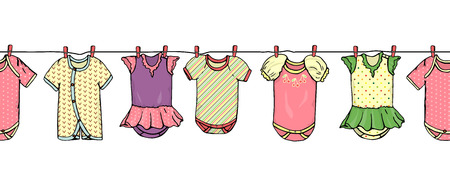1. Introduction to Nursery Options in the UK
When it comes to early years childcare in the UK, parents have a variety of options to consider, with state-funded and private nurseries being the most common choices. Understanding these options is crucial for making informed decisions about your child’s development and family finances. State-funded nurseries are typically operated by local authorities or within primary schools, aiming to provide accessible and affordable care that meets government standards. In contrast, private nurseries are independently run businesses or charitable organisations offering more flexible services, often at a higher cost but with additional amenities or extended hours.
The landscape of nursery provision reflects a blend of public investment and private enterprise, all regulated by Ofsted to ensure safety and quality. Each setting plays a distinct role: state-funded nurseries help families access essential childcare regardless of income, while private nurseries offer tailored experiences that may better suit certain needs or preferences. Choosing between them involves considering factors such as location, opening times, curriculum approach, costs, and available government support.
| Type | Provider | Main Features |
|---|---|---|
| State-Funded Nursery | Local Authority / Primary School | Free/low-cost places; set hours; Ofsted-regulated |
| Private Nursery | Independent Business / Charity | Flexible hours; wider amenities; higher fees |
This overview sets the stage for understanding the key differences, costs, and quality measures associated with each type of nursery in the UK.
2. Key Differences Between State-Funded and Private Nurseries
When considering early years education in the UK, its important to understand the core differences between state-funded and private nurseries. These differences can impact your childs experience and your familys decision-making process. Below is a detailed comparison based on structure, funding, curriculum, and staffing approaches commonly found in UK nurseries.
Comparison Table: State-Funded vs. Private Nurseries
| Aspect | State-Funded Nurseries | Private Nurseries |
|---|---|---|
| Structure | Usually attached to primary schools or local council facilities; operate within standard school hours and term times. | Independently operated; flexible opening hours, often open year-round including school holidays. |
| Funding Sources | Mainly funded by the government and local authorities; places may be free or subsidised for eligible families. | Funded by parent fees; limited access to government funding except for universal free hours entitlement. |
| Curriculum | Follow the Early Years Foundation Stage (EYFS) statutory framework with oversight from Ofsted. | Also follow EYFS but may offer additional enrichment activities (e.g., languages, music) at extra cost. |
| Staffing Approaches | Qualified staff with teaching assistants; staff ratios regulated by law. | Varied staff qualifications; some settings employ specialist teachers or offer higher staff-to-child ratios. |
Main Takeaways for Parents
- Accessibility: State-funded nurseries are generally more accessible to families on a budget, while private nurseries often provide greater flexibility in terms of hours and services.
- Diversity of Offerings: Private nurseries may include extra-curricular activities that arent standard in state settings, but these usually come with an additional fee.
- Quality Assurance: Both types of nurseries are subject to Ofsted inspections, ensuring minimum quality standards across the board. However, individual experiences can vary depending on location and management style.
- Cultural Fit: Some private nurseries cater specifically to certain communities or educational philosophies (e.g., Montessori or Forest School), offering parents more choice.
Your Child’s Experience Matters Most
The right choice between state-funded and private nurseries depends on your family’s needs, priorities, and budget. Always visit potential settings in person, ask about staff qualifications and daily routines, and consult recent Ofsted reports to make an informed decision that balances cost, convenience, and quality for your child’s early education journey.

3. Cost Implications for Families
One of the most significant factors for parents choosing between state-funded and private nurseries in the UK is cost. Understanding the differences in typical fees, entitlement to free childcare hours, and potential extra charges can help families make informed decisions.
Typical Nursery Costs
The costs of nursery provision vary greatly depending on location, type of setting, and the age of your child. Here’s a comparison table showing average weekly costs for full-time care:
| Type of Nursery | Average Weekly Cost (Full-Time) |
|---|---|
| State-Funded Nursery | £0–£70* (after entitlements) |
| Private Nursery | £250–£350+ |
*State-funded nurseries are often attached to primary schools and may only offer part-time sessions. Additional hours or wraparound care may incur extra costs.
Free Hours Entitlements
The government offers certain free childcare entitlements to eligible families:
- All 3- and 4-year-olds are entitled to 15 hours of free early education per week, over 38 weeks per year.
- Eligible working families can access up to 30 hours per week for 3- and 4-year-olds.
- Some disadvantaged 2-year-olds may also qualify for 15 free hours.
These funded hours can be used in both state-funded and many private nurseries, but private settings often charge more for additional hours beyond the funded limit.
Additional Charges to Consider
Even with free hours, there are often extra costs that parents need to budget for:
- Meals and snacks: Many nurseries charge separately for food, especially in private settings.
- Nappies and wipes: Some nurseries require parents to provide these or pay an extra fee.
- Extra-curricular activities: Music sessions, outings, or language classes may not be included in basic fees.
- Late collection fees: Both state and private nurseries often impose penalties for late pick-ups.
The overall cost can therefore differ widely based on your choice of nursery, location, usage pattern, and eligibility for government support. It is crucial for families to request a clear fee breakdown from each provider before making a decision.
Quality of Care and Ofsted Ratings
When it comes to choosing between state-funded and private nurseries in the UK, understanding the quality of care is crucial. Both types of nurseries are subject to regulation and inspection by Ofsted (the Office for Standards in Education, Children’s Services and Skills), which ensures that childcare settings meet national standards for safety, learning, and development. However, there can be differences in how each type approaches quality assurance and continuous improvement.
Ofsted Inspection Process
Ofsted inspectors assess nurseries based on several criteria, including:
- Quality of education
- Behaviour and attitudes
- Personal development
- Leadership and management
- Safeguarding and welfare requirements
The inspection process involves both announced and unannounced visits. Inspectors observe interactions between staff and children, review records, speak with managers, and gather feedback from parents. The outcome of this inspection is a rating that is publicly available, helping parents make informed choices.
What Ofsted Ratings Mean
| Rating | Description | What It Means for Parents |
|---|---|---|
| Outstanding | The setting provides exceptionally high-quality care and education. | Parents can expect the best possible environment for their child’s development. |
| Good | The nursery meets all requirements well, with minor areas for improvement. | A strong choice; children’s needs are met effectively. |
| Requires Improvement | Certain aspects do not meet standards but are being addressed. | Parents should enquire about what steps are being taken to improve. |
| Inadequate | The setting fails to meet key requirements; immediate action required. | Caution advised; seek alternatives or assurances of rapid improvement. |
Comparing Quality Across State-Funded and Private Nurseries
State-funded nurseries, often attached to schools or local authorities, may benefit from established frameworks and consistent oversight. Private nurseries, meanwhile, might offer innovative programmes or additional services due to greater flexibility in resources. However, both must adhere to the same legal standards set by Ofsted. It’s important for parents to look beyond ratings alone; factors such as staff turnover, key person systems, and engagement with families also play a significant role in daily care quality.
Practical Advice for Parents
- Always check the latest Ofsted report: Reports are available online and can give insight into a nursery’s strengths and weaknesses.
- Visit in person: Observe staff interactions, ask about recent improvements following inspections, and gauge the overall atmosphere.
- Ask questions: Enquire about staff qualifications, child-to-adult ratios, and ongoing professional development.
- Consider your child’s individual needs: The best-rated nursery may not always be the right fit for every child; personal preferences matter too.
Selecting a nursery is a significant decision. By understanding what Ofsted ratings mean and considering both regulatory information and your own observations, you can make a safer and more informed choice for your child’s early years education in the UK.
5. Accessibility and Waiting Lists
When considering state-funded versus private nurseries in the UK, accessibility and waiting lists are crucial factors for parents. Both types of nurseries face challenges with availability, but the reasons and implications often differ based on funding, location, and demand.
Availability and Location Factors
State-funded nurseries are typically attached to primary schools or run by local authorities, meaning their locations are often tied to residential areas. As a result, these settings may be more accessible to families living nearby, especially in urban centres. However, in rural or less populated regions, state-funded options can be limited, requiring longer commutes or reliance on fewer facilities. Private nurseries, on the other hand, tend to cluster in affluent neighbourhoods or near business districts to cater to working parents. This can offer convenience for those commuting but may exclude families from lower-income areas.
Comparison Table: Accessibility Factors
| Aspect | State-Funded Nurseries | Private Nurseries |
|---|---|---|
| Location Variety | Mainly residential/attached to schools | Urban centres/business districts |
| Transport Links | Often close to public transport routes | Variable; some require car access |
| Opening Hours | Typically term-time/school hours | Extended hours, year-round options |
Waiting List Challenges
The popularity of state-funded nurseries means that places are highly sought after and waiting lists can be long—sometimes over a year in oversubscribed areas. Eligibility criteria may also apply, prioritising children based on age, special needs, or catchment area. In contrast, private nurseries usually offer more flexibility with enrolment but come at a higher cost. Although some private settings have shorter waiting times, high-quality providers in desirable locations may also experience significant demand and lengthy queues.
Key Takeaways for Parents
- If you require specific hours or year-round care, private nurseries might offer greater flexibility but prepare for higher costs and potential waiting lists in popular locations.
- If affordability is your main concern and you live within a good catchment area, applying early for state-funded places is essential due to oversubscription risks.
Ultimately, both options present accessibility hurdles depending on your family’s circumstances. Early research and prompt applications are recommended to secure a nursery place that meets both your logistical needs and your child’s wellbeing.
6. Making the Right Choice for Your Child
Selecting between state-funded and private nurseries in the UK is a significant decision for every parent. To ensure your child’s safety, well-being, and development, it’s vital to approach this choice methodically. Below are practical steps and key safety considerations that can guide you in evaluating nursery options.
Visit Prospective Nurseries
Nothing replaces an in-person visit. Arrange to tour both state-funded and private settings, ideally during normal hours so you can observe daily routines. Pay attention to:
- The cleanliness of facilities
- Staff-to-child ratios
- Security measures (such as secure entry systems and visitor protocols)
- Outdoor play areas and their maintenance
Essential Questions to Ask
Prepare a list of questions to cover both practicalities and safety aspects. Here’s a useful checklist:
| Area | Key Questions |
|---|---|
| Staff Qualifications | Are staff DBS-checked and qualified in early years education? What is the staff turnover rate? |
| Health & Safety | How are allergies, medication, and illness managed? Are first aiders always present? |
| Daily Routine | What does a typical day look like? How is outdoor time incorporated? |
| Curriculum & Activities | How are learning and play balanced? Are activities tailored to individual needs? |
| Parent Communication | How do you update parents about progress or incidents? Is there an app or regular meetings? |
| SEN Provision | How do you support children with special educational needs? |
| Policies & Procedures | Can I see your safeguarding, complaints, and emergency procedures policies? |
Compare Costs Transparently
Create a simple table comparing fees, what’s included (meals, nappies, trips), opening hours, and any government funding eligibility.
| Nursery Type | Fees per Week (£) | Inclusions | Funding Options |
|---|---|---|---|
| State-Funded | Often free or subsidised (15–30 hours/week) | BASIC: snacks, some meals; EXTRAS: usually not included | Government-funded hours, means-tested support available |
| Private Nursery | £150–£350+ | BASIC: all meals, nappies; EXTRAS: outings, enrichment activities may incur extra cost | Some accept government funding; top-up fees likely required |
Cultural Fit & Community Feel
The ethos of the nursery should align with your family values. Consider how diversity is celebrated and how community links are fostered — these aspects often differ between settings.
Your Child’s Needs Come First
No two children are alike. Reflect on your child’s personality, routine preferences, dietary requirements, and any additional support needed. A good nursery will be willing to adapt its care to support your child holistically.
A Final Word on Safety and Practicality
The right choice balances quality, affordability, convenience, and above all else — safety. Trust your instincts during visits: if something feels amiss or unclear, don’t hesitate to ask further questions or seek recommendations from other local parents. Your vigilance is the best safeguard for your child’s early years experience.


